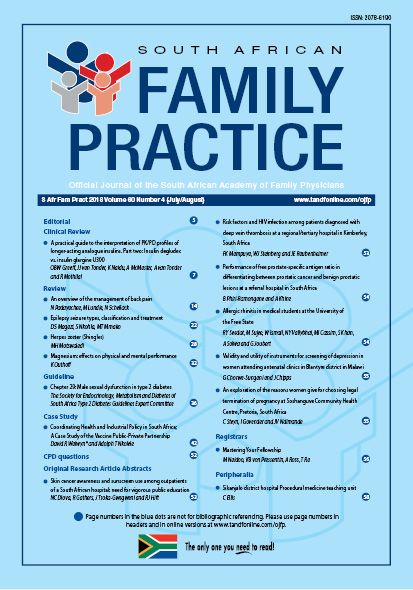An exploration of the reasons women give for choosing legal termination of pregnancy at Soshanguve Community Health Centre, Pretoria, South Africa
Keywords:
legal termination of pregnancy, reasons for choosing termination of pregnancy, financial difficulties, contraceptive failure
Abstract
Background: Termination of pregnancy (TOP) is one of the most commonly performed gynaecological procedures in the world and was legalised in South Africa in 1996 with the passing of the Choice on Termination of Pregnancy Act, 1996 (Act No. 29 of 1996). Utilisation of the TOP service increased significantly after the promulgation of the Act, to the extent that 7% of pregnant women in South Africa chose to terminate their pregnancies legally in 2012. Worldwide, women most commonly state their reasons for choosing TOP as a desire to stop or postpone childbearing. Although several international studies have been done in this regard, the reasons for women requesting legalised TOP in South Africa have not been explored in depth. Methods: A qualitative study using the case-study approach and involving one-on-one open interviews with participants was done at the TOP Clinic at Soshanguve Clinic 3 with the aim of gaining more insight into this issue. Results: The following themes emerged from the interviews: formal education not completed, financial difficulties, contraceptive failure, wrong timing, reasons relating to the existing family; and problems relating to the partner. Conclusion: This study also gave insight into the complex personal and social contexts within which women make the decision to terminate their pregnancy, and the thoughtfulness with which they make their decisions. (Full text of the research articles are available online at www.medpharm.tandfonline.com/ojfp) S Afr Fam Pract 2018; DOI: 10.1080/20786190.2018.1432138
Section
Research Articles
By submitting manuscripts to SAFP, authors of original articles are assigning copyright to the South African Academy of Family Physicians. Copyright of review articles are assigned to the Publisher, Medpharm Publications (Pty) Ltd, unless otherwise specified. Authors may use their own work after publication without written permission, provided they acknowledge the original source. Individuals and academic institutions may freely copy and distribute articles published in SAFP for educational and research purposes without obtaining permission.

